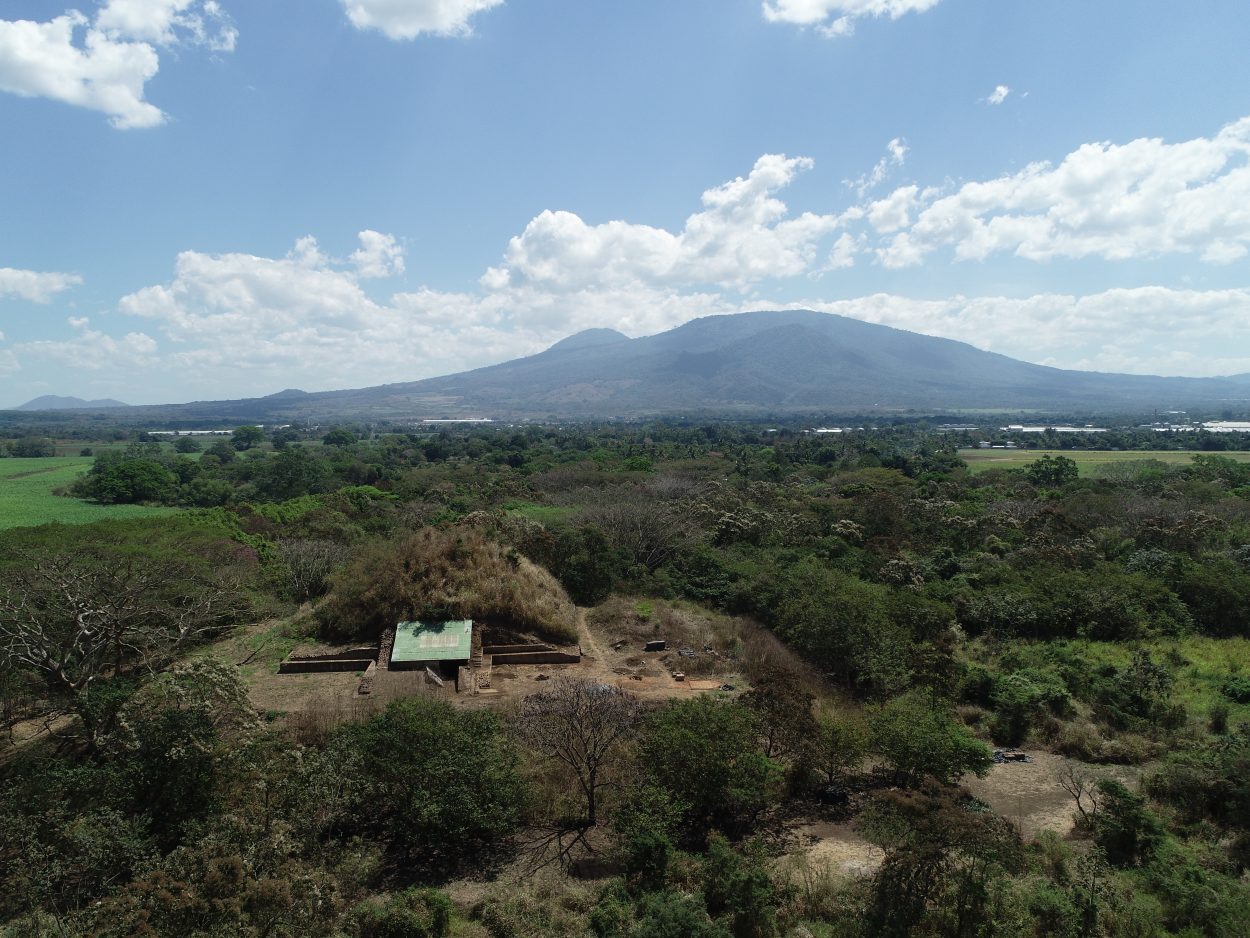A large pyramid at the Maya site of San Andrés was built in response to the Tierra Blanca Joven eruption event at the Lago Ilopango volcanic caldera.
San Andrés was constructed in the valley of Zapotitán in the department of La Libertad, El Salvador. Settlement began around 900 BC as an agricultural centre, emerging as the capital of Maya polity between AD 600 and AD 900.
When the Tierra Blanca Joven (TBJ) eruption occurred around AD 539, the caldera ejected around 43.7 cubic kilometres of volcanic material. The eruption was one of the largest terrestrial volcanic events in recorded history, causing major climatic changes, and the devastation of an area up to 100 km in radius.
Dr Akira Ichikawa, from the University of Colorado Boulder said: “Due to the catastrophic magnitude of the eruption, scholars have considered that many sites were abandoned, and it took a long time to reoccupy affected areas”.

However, studies at San Andrés situated just 40 km from Lago Ilopango has revealed that major monumental construction began at the site only a few years after the eruption.
The study has dated the beginning of the construction of the La Campana pyramid (structure 5) to only 5-30 years after the TBJ eruption, with the pyramid being completed within 80 years. At the time, the La Campana pyramid was the largest structure in the valley, rising to 7 metres in height and with a volume of 23,000 m3.

In his research, Dr Ichikawa concludes that the people of San Andrés built the La Campana pyramid in response to the volcanic eruption, utilising the volcanic tephra from the eruption as a construction material. The Maya deified volcanoes and mountains, so the structure likely had a religious purpose to possibly guard against future eruptions.
Additionally, the ability of rulers to marshal such a monumental effort would have reinforced their power and status which may have been challenged by the disaster. Such benefits may explain why this also appears to have happened when another volcano erupted around AD 620. Once again, the inhabitants of San Andrés began building massively. Find out more
Header Image Credit : Mariordo (Mario Roberto Duran Ortiz) – CC BY-SA 3.0





